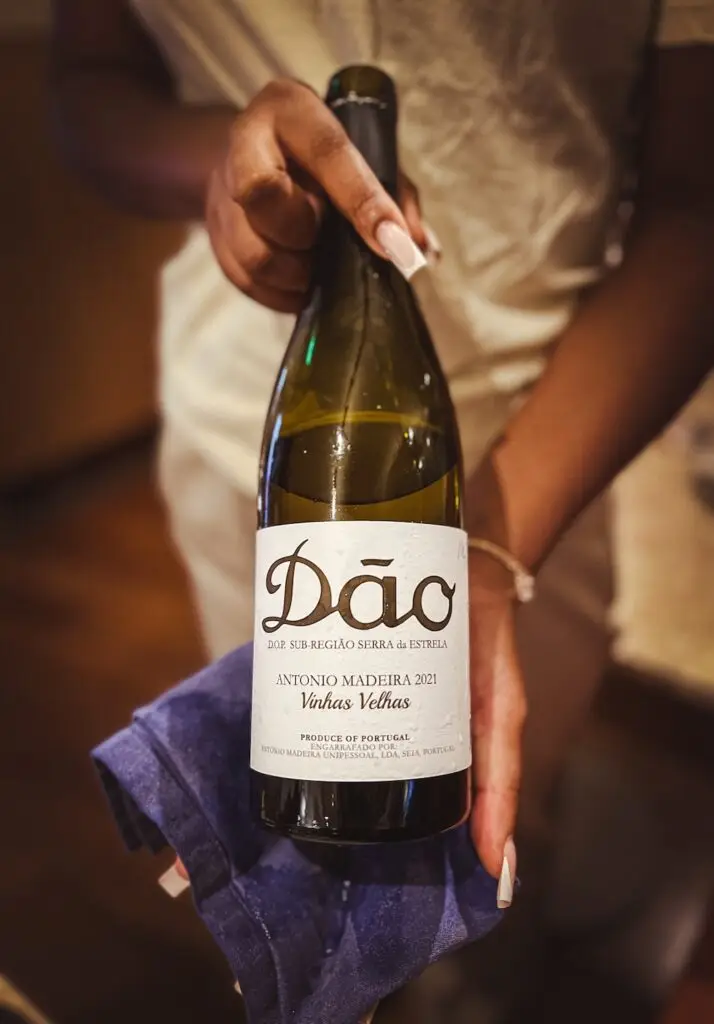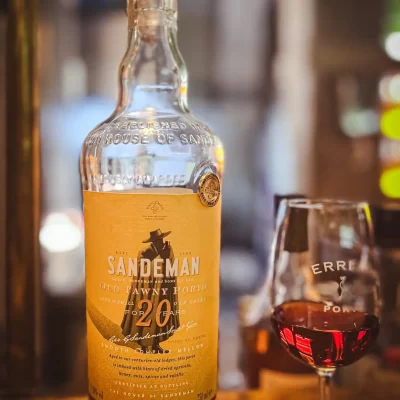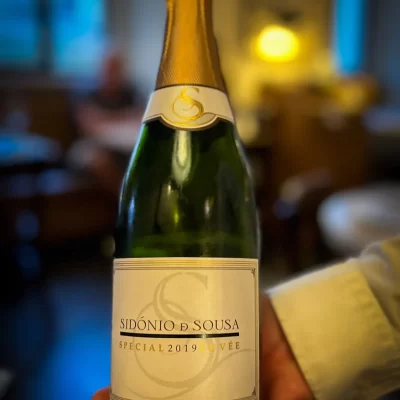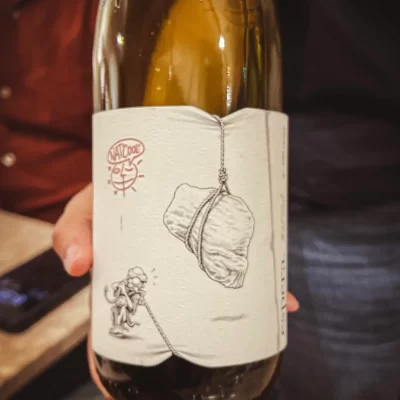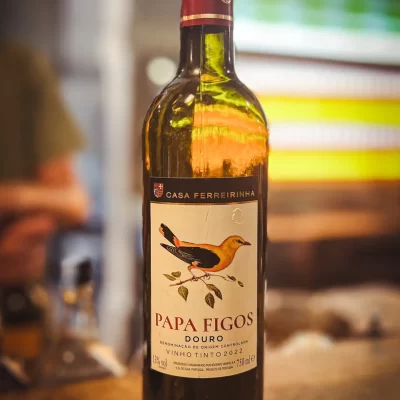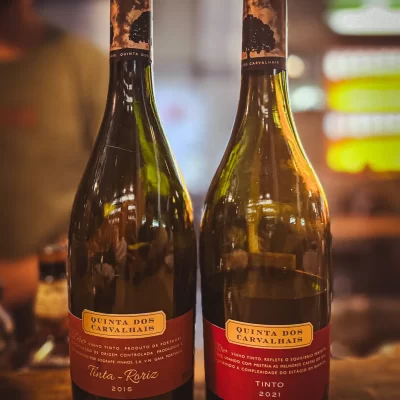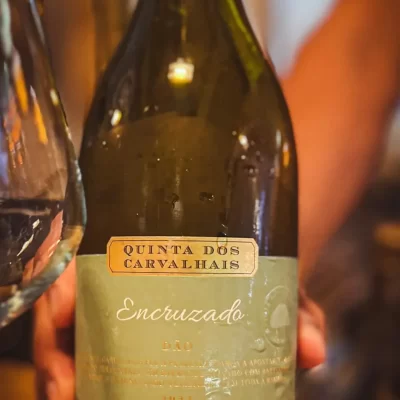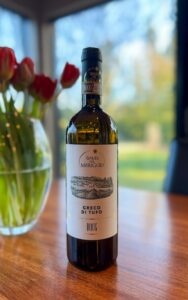Portugal’s wine culture is diverse and full of history, with centuries-old wine regions spanning from the lush, green north to the sun-soaked hillsides of the interior. On my recent trip to Lisbon, I set out to sample wines not only from the better-known wine regions like Douro and Dão, but also some lesser-known areas such as Vinho Verde, Tavora-Varosa, and Bairrada. From world-class reds to sparkling wines that rival Champagne, here’s a glimpse into what makes these regions so special and worth checking out!
sparkling wine
Sparkling Wine Regions
Portugal is known for its still wines, but the sparkling options are equally impressive. The northern regions of Bairrada, Vinho Verde, and Tavora-Varosa, offer some exceptional bubbly that surprised me with their diversity and complexity.
Bairrada DOC
Perhaps the most important sparkling wine region in Portugal, Bairrada produces structured, Champagne-like wines. Made from a variety of grapes, these wines often have a saline element that pairs beautifully with seafood. This region produces rich sparkling wines that often have the elegance of Champagne with a unique Portuguese twist.
Vinho Verde DOC
Known for its light, fizzy style, Vinho Verde is a refreshing daytime option. This region produces white, rosé, and even red sparkling wines, with crisp acidity and bright fruit flavors that are perfect for summer. The primary grapes are Alvarinho and Loureiro, with Alvarinho highlighting fruit and Loureiro bringing intense minerality. When blended together, they deliver a zippy, floral freshness.
Tavora-Varosa DOC
One of the smaller, more traditional sparkling wine regions is Tavora-Varosa. The whites, reds, and rosés are produced using the traditional Champagne method, known as Méthode Champenoise. This region focuses solely on making approachable, delicious, and quite affordable sparkling wine. The most famous producer is Murganheira, known for its elegant and rich sparkling wines.
still wine
Still Wine Regions
As mentioned earlier, the majority of wine produced in Portugal is still wine. And, these wines span a variety of styles including reds, whites, rosés, late harvest dessert wines, and natural wines. Each region offers something distinct, making Portugal an exciting country for those eager to discover new wines. Below, you’ll find an overview of some of Portugal’s key wine regions and the styles they are best known for—a perfect starting point for anyone interested in learning more about Portuguese wines.
Vinho Verde DOC
While the region produces sparkling wine, Vinho Verde is known for producing excellent white wines. Floral aromatics, excellent acidity and minerality, fruity and versatile. that are bursting with character. Alvarinho and Loureiro are the most important grapes and can be found as varietal wines or blended together. Alvarinho offers a fruitier style, and Loureiro is known for its minerality. A great pair!
Douro DOC
The Douro Valley is Portugal’s most famous wine region, known for producing structured, world-class reds that rival those from Napa or Bordeaux. But before we go on about the wines, the entire region is a UNESCO World Heritage Site – that’s pretty incredible!
The reds are rich, powerful, and full of dark fruit flavors—perfect wines for aging. Touriga Nacional, Touriga Franca, Tinta Roriz (Tempranillo), and Syrah are among the grape varietals you’ll find here. There are different subregions that offer a different expression of the varietals thanks to unique weather, elevation, slope, and sun exposure.
Douro’s white wines gain just as much attention. Rich and layered with vibrant fruit and excellent minerality. They are often compared to whites from France’s Rhône Valley, but maintain a distinct Portuguese character that makes them truly unique.
Dão DOC
Often called the “Burgundy of Portugal,” Dão produces some of the country’s most elegant wines. The reds are structured and focused, medium-to-full bodied, with dark fruit and spice. Touriga Nacional, Portugal’s most important red grape, shines here alongside varieties like Jaen (Mencia) and Tinta Roriz (Tempranillo).
The whites, particularly those made from Encruzado, are outstanding—rich with flavors of apple, citrus, and stone fruit, beautifully balanced by minerality and oak. Look for Quinta da Pellada or Quinta de Saes labels for a true Dão experience.
Bairrada DOC
The reds from Bairrada, made primarily from the Baga grape, are tannic and bright, with an earthy undertone that’s perfect for pairing with foods like duck, pork, or even salmon. These wines develop beautifully with bottle age, becoming softer and more complex over time. The region’s whites, often compared to older dry Rieslings, have a focused, saline quality that pairs wonderfully with seafood.
Alentejo DOC
This very large region found in southern Portugal focuses primarily on red wine. These rich, yet balanced wines can be enjoyed young, but many are worthy of aging. Both single varietal and blends are common, with star varietals including Trincadeira, Aragones (Tempranillo), and Castelao being most common. Syrah and Cabernet Sauvignon can also be found. If you’re looking for a comparison, think Paso Robles in California. Both the countryside and the wines have many similarities.
Portugal’s wine regions offer an incredible array of styles and flavors, and I barely scratched the surface. From the light, refreshing Vinho Verde to the bold reds of Douro and the structured elegance of Dão, there’s a Portuguese wine for every palate. This article covers the full spectrum and serves as a great resource for anyone eager to learn more. A Portugal-themed wine tasting is a perfect way to dive deeper.
My trip to Portugal left me eager to go back and visit the regions where the wines I tried came from. Until then, I’m looking forward to discovering more of these exceptional wines closer to home.


